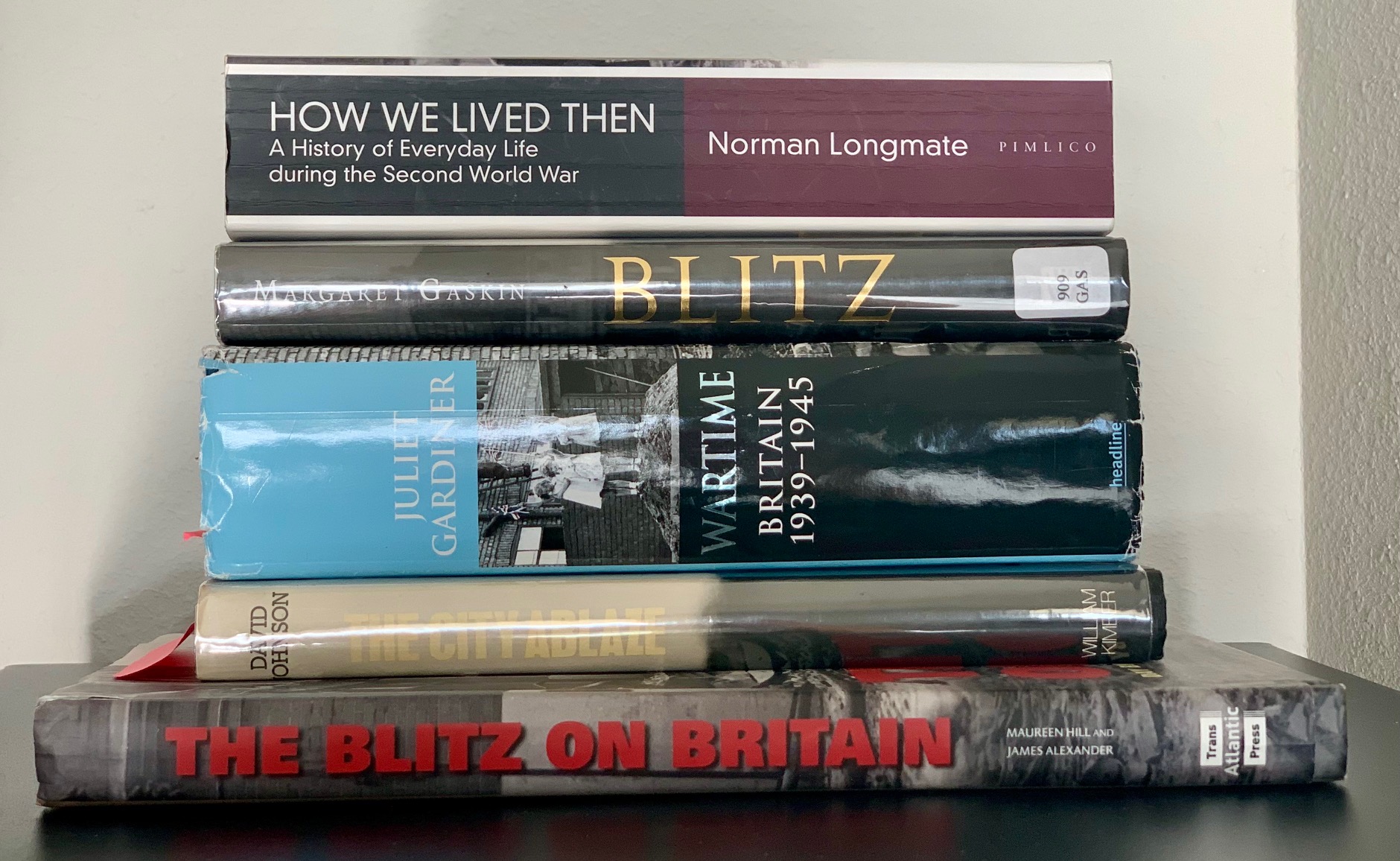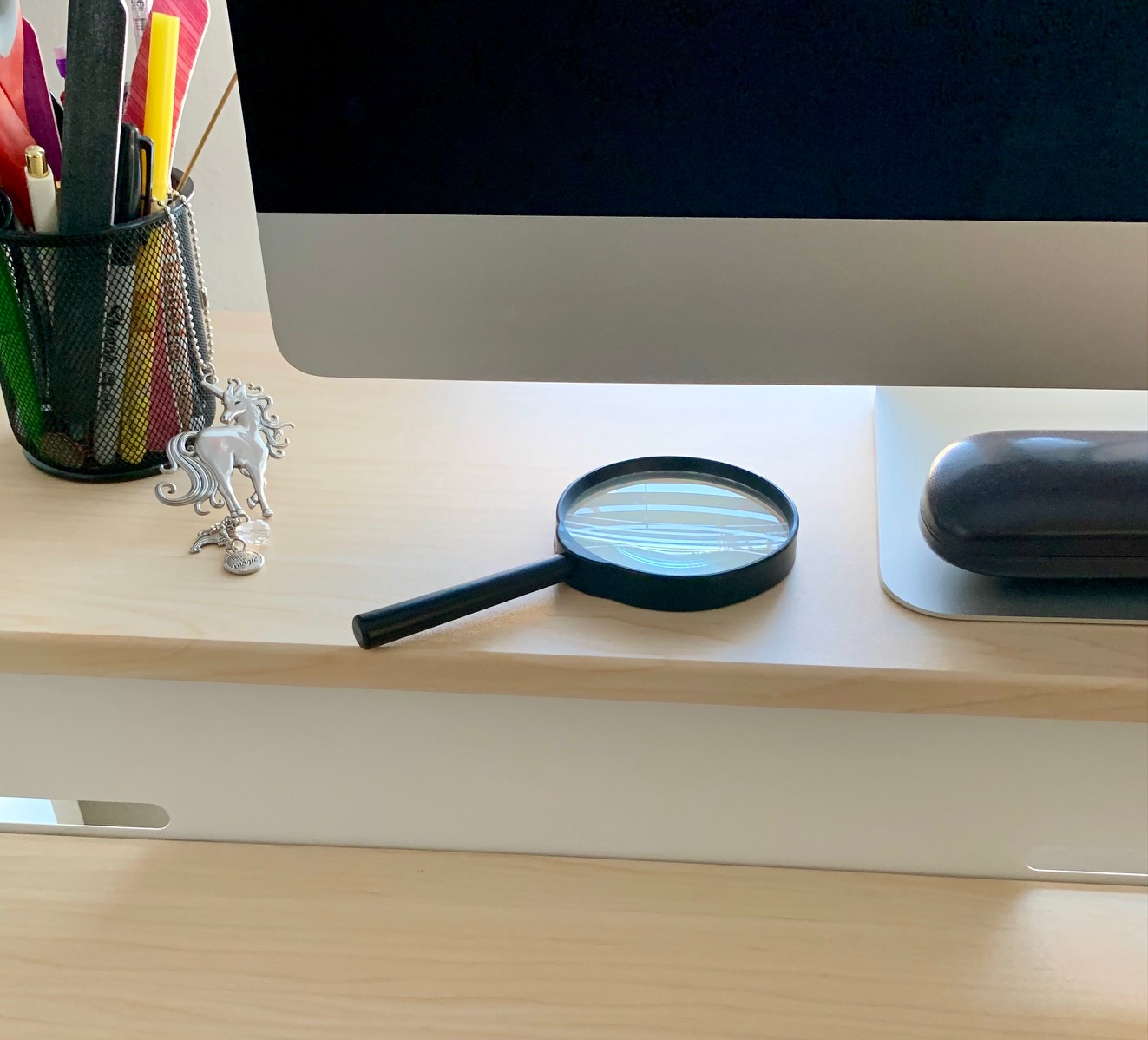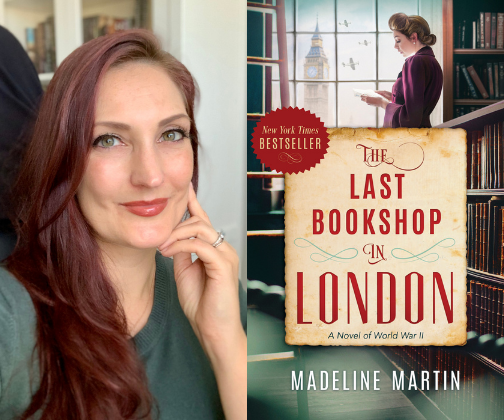by Madeline Martin
originally posted to author’s website 3.18.22
After the release of The Last Bookshop in London, I was often asked when speaking at book clubs where I found my research and how much of the book is historically accurate. Aside from the characters and Primrose Hill Books itself, everything is as true to history as was possible for me to make it. Even the location of the bombings and when they occurred (with one exception) are exactly how they were recorded in history.
So, where do I get this information? Books, of course! ☺ Well, and a few other sources.

Here’s everything I used in my research for The Last Bookshop in London
I confess to being a fan of nonfiction reading and can lose myself in historical details and accounts for hours on end. The book stack image represents a small selection of the numerous books I read.
Books
The list is (in order of top to bottom):
- How We Lived Then by Norman Longmate
- Blitz by Magaret Gaskin
- Wartime Britain 1939-1945 by Juliet Gardiner
- The City Ablaze by David Johnson
- The Blitz on Britain by Maureen Hill and James Alexander
Juliet Gardiner does several books on WWII Britain – not only do I have them all, but I loved this particular book so much, I apparently bought it twice and ended up sending the extra to a fellow author friend.
The Blitz on Britain is filled with pictures and news headlines about the bombings as they took place and provided incredible day-to-day breakdowns of not only the weather but also details on the locations, times, and damage done by the airstrikes.
Personal history
Personal accounts were also huge in the building of this book in my head. There are many websites online that have personal eyewitness accounts of what people lived through during the Blitz and a series of diary entries before, during, and after the war in a compendium assembled by Mass-Observation.
This project was founded by Tom Harrison, Charles Madge, and Humphrey Jennings – all on their own dime (which meant most of the contributors did so voluntarily).
What started as an intent to detail King Edward VIII’s abdication for love (for Wallis Simpson) turned into invaluable documentation of details from everyday life during WWII.
What I found so important with these personal annotations was how people reacted to events which truly afforded me a stronger understanding of the mindset of Londoners then.
War photos
I also used photographs extensively in my research. It’s truly incredible what one can unearth from photos – from fashion to street appearances and even shop names. Pictures before, during, and after the war were so important for me to grasp that understanding of how the world looked through the eyes of my characters.
I found myself straining forward to see minute details so often that my neck started hurting from craning (I’m feeling my 40s more and more every day LOL!). I finally bought a magnifying glass and it was a game-changer! It now holds a permanent place at the base of my computer for all research purposes.
My neck and eyes thank me.

Video and sound
And finally – videos and sound bites were so important to complete that 360-degree experience in my mind.
Through these recorded moments in history, I was able to listen to that first devastating newscast when Prime Minister Neville Chamberlain announced on the BBC “This country is at war with Germany.” It was chill-inducing to hear as I imagined people huddled around their radios on the edges of their seats.
I was also able to watch videos of people seeking refuge in tube tunnels stacked side by side like rows of sardines, Londoners brushing debris off their doorstep to collect the day’s milk delivery, how to work around the ration of food and fuel and – most powerful of all – the air raid siren with the thundering destruction in the background of an aerial attack and the answer of the anti-aircraft guns booming.
Q: Did you get to visit London for your research?
A: While I did not have the opportunity to travel to London while writing The Last Bookshop in London (I wrote it during the pandemic, but more on that in another blog post), I have been to London several times and was grateful to have had the experience still locked in my mind to incorporate into my story.
All these sources of research helped to really flesh out the story for me in writing The Last Bookshop in London. In my upcoming book, The Librarian Spy, I had even more research cut out for me with the setting being in three different countries during WWII: America, Portugal, and France but there will be more of that in another blog post as well.
If you are interested in my writing process for this book, check out this blog post!
About the Author:
Madeline Martin is a New York Times and International Bestselling author of historical fiction and historical romance.
She lives in sunny Florida with her two daughters (known collectively as the minions), one incredibly spoiled cat and a man so wonderful he’s been dubbed Mr. Awesome. She is a die-hard history lover who will happily lose herself in research any day. When she’s not writing, researching or ‘moming’, you can find her spending time with her family at Disney or sneaking a couple spoonfuls of Nutella while laughing over cat videos. She also loves to travel, attributing her fascination with history to having spent most of her childhood as an Army brat in Germany.
Madeline Martin is available to visit with book clubs via NovelNetwork.com.

